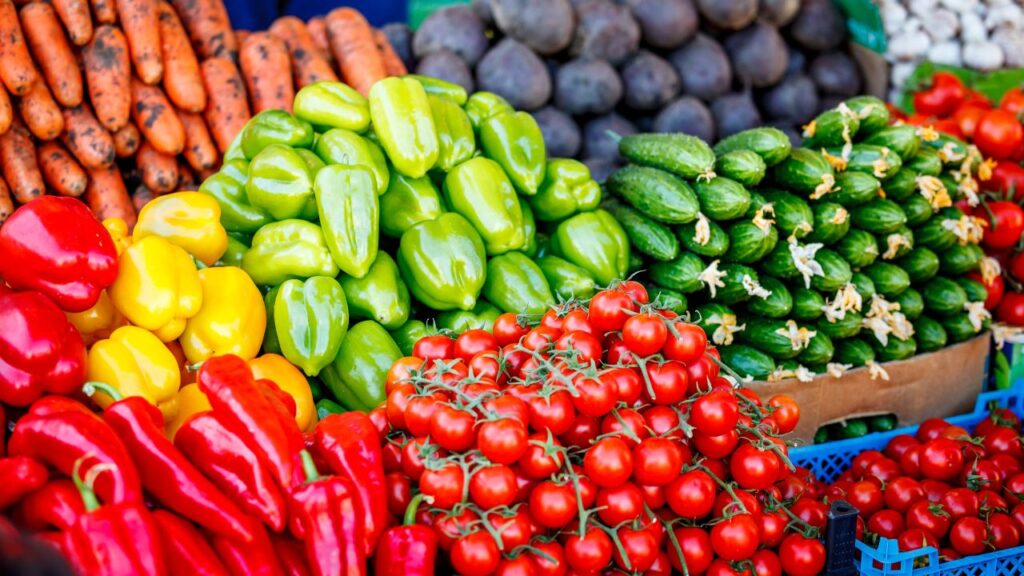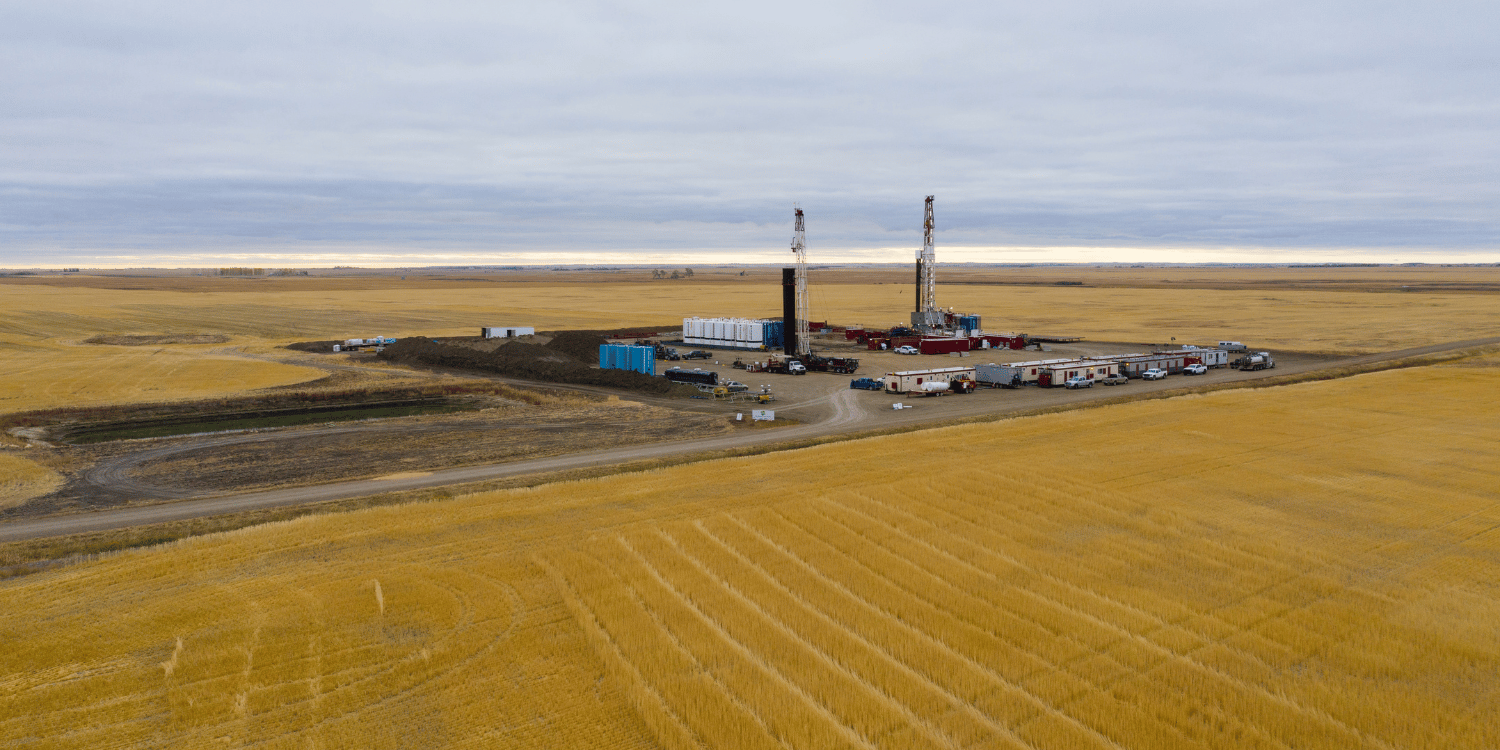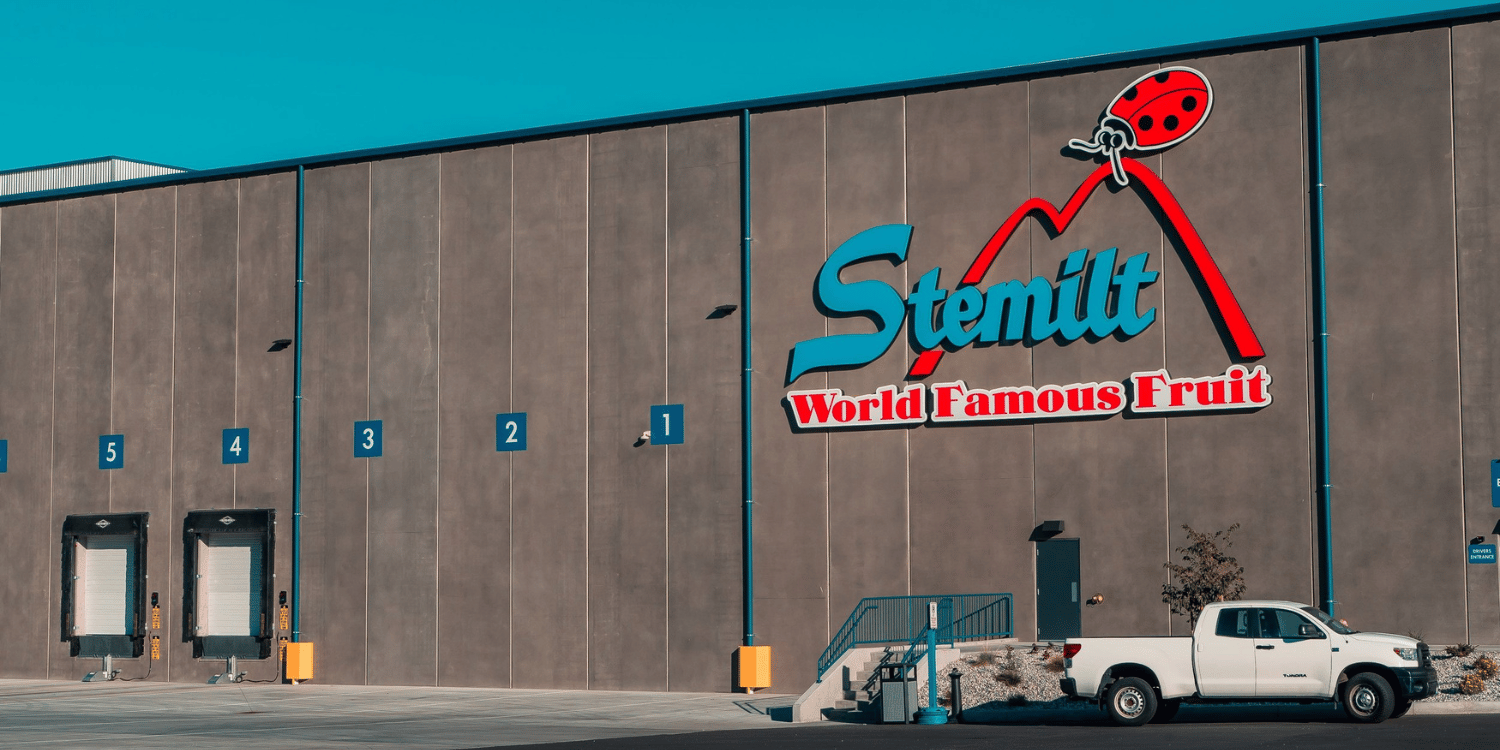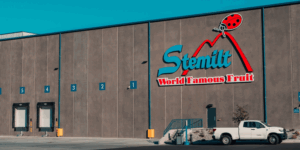Farmers’ markets have grown in number and popularity over recent years, indicating a shift toward local, fresh produce and away from traditional, large-chain grocery stores.
Their rising dominance in the retail sector can be attributed to consumers’ increased awareness and interest in locally sourced, organic, and sustainably grown food products.
Moreover, customers appreciate the opportunity to interact directly with producers, gaining trust and transparency about the origins of what they consume.
In addition, customers are attracted to the unique and diverse product offerings unavailable in conventional grocery stores.
The social aspect of farmers’ markets, where buyers can engage with their community and local farmers, further drives their appeal.
As we all know, farmers’ markets are reshaping retail dynamics by offering economically viable and sustainable alternatives that consumers find appealing.
- Farmers’ markets success is driven by various key factors.
- These markets create unique economic sustainability compared to traditional grocery stores.
- Local sourcing at these markets offer significant benefits for consumers.
- Producers focus on offering organic, sustainable products that highlight the uniqueness of their markets.
- Farmers’ markets foster crucial producer-customer interaction and cultivate a sense of community.
It goes without saying that the above points merely hint at the richness of the subject at hand. The retail dominance of farmers’ markets involves a wide array of additional aspects that we’re preparing to explore further.
For instance, we have a whole section dedicated to the role that farmers’ markets play in promoting and maintaining biodiversity. We touch upon their impact on local economy and how they pave the way for innovative agricultural practices.
Another fascinating factor is their potential effect on public health and nutritional habits, an area that’s garnered much attention in recent years. Our detailed analysis in the following sections will assuredly provide a comprehensive overview of these dimensions.
Here’s to deepening our understanding together as we move forward to discuss these compelling points. Let me tell you, stay with us to get a full picture of the farmers’ markets’ continued rise as major retail competition.
Contents
- What Factors Drive Farmers’ Market Success?
- Farmers’ Markets Vs Traditional Grocery Stores
- How Do Consumers Benefit from Local Sourcing?
- Organic and Sustainable Products in Farmers’ Markets
- Significance of Producer-Customer Interaction
- Uniqueness of Products in Farmers’ Markets
- How Do Farmers’ Markets Cultivate Community?
- Insight on Economic Sustainability of Farmers’ Markets
- The Bottom Line
What Factors Drive Farmers’ Market Success?
In Short: Factors driving the success of farmers’ markets include consumers’ awareness of their food sources, the quality and variety of products, unique shopping experiences, and transparency that builds trust. These elements collectively reshape the retail landscape and boost local economy.
When we speak of farmers’ market, we often think about their rustic charm and the organic, fresh produce they offer. But have you ever wondered what makes these markets succeed in this fast-paced retail environment?
One of the core factors is the growing consumers’ awareness about the food they eat.And farmers’ markets, being an excellent source for local, organic produce, cater to that awareness.
Wouldn’t you prefer to eat foods that are chemical free, fresh, and grown by the local farmers?
We now arrive at the quality and variety that these markets possess.
Let’s look at some highlights:
- Farm-fresh: This tag assures consumers of the quality and freshness of the products.
- Variety: Seasonal fruits and vegetables, homemade jams, sauces, and cheeses… Farmers’ markets bring a wide assortment of items.
- Innovation: Unique handcrafted products from local artisans often find space in farmers’ markets, enhancing the variety.
Another crucial driver of their success is the experience they offer.It’s not just a place to buy fresh fruits and vegetables but a way of life for many.
Imagine walking down the aisle, handpicking your produce, exchanging a pleasant conversation with the farmer about the farming practices?Or perhaps, sipping a cup of hot cocoa while browsing the stalls?This shopping experience is something that the traditional retails can only dream of.
Transparency and trust also play a significant role.Consumers appreciate knowing exactly where their food comes from and this close-to-source shopping builds trust.
Pro Tip: One of the core factors driving farmers’ markets’ success is the growing consumer awareness about eating local, organic, and chemical-free food, with their success also attributed to the unique shopping experience, trust, and local support they offer.
The success of farmers’ markets is a game changer in the retail industry, isn’t it?It’s reshaping the way consumers shop and what they shop for, by focusing on quality, trust, and local support.
So next time when you visit a farmers’ market, remember, it’s not just the fresh produce or the friendly farmer that’s making this market thrive.It’s a combination of multiple factors working together to drive its success in the retail landscape.
Farmers’ Markets Vs Traditional Grocery Stores
In Short: Farmers’ markets are gaining popularity as they offer fresh, local produce, promoting sustainability and building community rapport, which contrasts with traditional grocery stores that source widely, sacrificing freshness. Despite the broader options and convenience provided by grocery stores, consumers seem to be gravitating towards conscious shopping offered by farmers’ markets.
Noticing the buzz around farmers’ markets lately? Could it be a mere trend or a significant shift in the retail industry?
Well, it’s not a passing fad. These local markets have been incrementally gaining footing as a credible alternative to traditional grocery stores.
But, why are shoppers switching loyalties to farmers’ markets? Allow me to shed light on this phenomenon.
First off, farmers’ markets emphasize fresh and local produce. This means you buy fruits and veggies that are seasonal, and this can differ in flavor and nutritional content from what you purchase in grocery stores.
Isn’t that a healthy choice for a discerning customer?
Did you know that most produce in grocery store travels from farms across the country, or even from overseas? Think of the environmental footprint that leaves. Not to mention, the freshness of the produce is sacrificed.
On the contrary, farmers’ markets provide a sustainable and environmentally friendly shopping option, where distances travelled by the produce are kept at minimum.
Please allow me to summarize the main differences between farmers’ markets and typical grocery stores, to give you a simple comparison to understand this retail shift.
- In farmers’ markets, most, if not all, products are locally grown or made, ensuring freshness and sustainability.
- Conversely, grocery stores source from far and wide, not necessarily ensuring freshness or sustainability.
- Farmers’ markets build a sense of community, give customers the opportunity to interact directly with the farmers.
- Grocery stores, with its self-service approach, doesn’t provide this personalized customer to farmer interaction.
As a customer, which approach seems more appealing to you?
Another advantage that tilts the scale towards the farmers’ market side is the transparency. Every food product has a story, which you can learn by having a chat with the farmers.
The reassurance that your food comes from a reliable source is lacking in traditional grocery stores, wouldn’t you agree?
Within the bustling atmosphere of a farmers’ market, there’s an innate sense of community. You are directly supporting local businesses.
Isn’t it refreshing to be a part of a movement for a local economy, to be a contributor rather than just a consumer?
It’s clear that the rise of farmers’ markets is an interesting change in the retail landscape, with customer benefits that go far beyond the shopping experience.
Pro Tip: Farmers’ markets have been gaining popularity as a credible alternative to traditional grocery stores due to their emphasis on fresh, local produce, environmental sustainability, and a sense of community, indicating a significant shift in the retail industry.
Though grocery stores still maintain a broader choice and the convenience of any-time shopping, it appears that the trend is slowly leaning towards more conscious shopping.
Let me tell you, next time you need to stock up on produce, consider your options thoughtfully. Do you opt for the large grocery store’s convenience, or the freshness and community spirit of farmers’ markets?
How Do Consumers Benefit from Local Sourcing?
In Short: Local sourcing facilitates faster delivery of higher quality products, economic growth of the community, and a sustainable lifestyle through reduced environmental impact. Additionally, it offers transparency in production processes and fosters a unique connection with local vendors.
Local sourcing carries with it an array of benefits for consumers, but just how significant are these benefits? That’s something we ought to dig into.
Did you know that products get to consumers faster when they’re locally sourced? Well, now you do.
This essentially means that the items are fresher, especially when it comes to perishable goods like fruits, vegetables, and dairy products. But time-saving isn’t the only advantage. There’s a lot more to local sourcing,
For instance, let’s talk about how local sourcing aids in stimulating the economic growth of a community. Does this concept make sense to you?
When you buy from local farmers, you’re directly contributing to the local economy. Your money stays within your community and helps generate employment. This imprint you leave is more significant than you might reckon.
Don’t you find it somewhat gratifying to know that your purchase can help a neighbor or a friend? Local sourcing is about building stronger local communities, how amazing is that?
Moreover, it contributes to reducing environmental damage caused by long-distance transportation of goods, including air pollution and greenhouse gas emissions. It’s a simple yet effective way to start living more sustainably, wouldn’t you agree?
The following points are what I believe to be the most crucial advantages of local sourcing:
- Higher Quality Products – because products travel less, they arrive in your home fresher and generally are of higher quality.
- Economy Stimulation – your money circulates within the community, boosting local economy.
- Environmentally Friendly – reduces harmful emissions caused by long-distance transport.
But quality, economics, and environmental impact are not the end of the story. Do you ever consider the origin of your food or the impact your purchases make?
Local sourcing allows you to understand the source of your products, providing a significant level of transparency in the production process. This transparency leads to trust in the products, doesn’t it?
Pro Tip: Buying locally sourced products contributes to your community’s economic growth, ensures higher product quality, promotes environmental sustainability, and provides a stronger sense of connection and transparency with the production process.
Lastly, there’s something special about knowing the story behind the products you buy. Engaging with local vendors, learning about their methods, and understanding their challenges can give you an appreciation that’s a little different than shopping in a mainstream supermarket.
Is not that kind of connection worth exploring? I believe it is. Farmers’ markets are not just about the variety of fresh produce, but also about the relationships, interactions, and the communal ethos that they engender.
Organic and Sustainable Products in Farmers’ Markets
In Short: Organic and sustainable products are driving the growth of farmers’ markets due to their superior quality and accountability. Factors like fresher produce, lower carbon footprint, biodiversity protection, and increased awareness about health benefits have made these products popular among consumers, who, in turn, support local economies and sustainable practices with their choice.
Over recent years, organic and sustainable products have formed the backbone of farmers’ markets growth. With the demand for chemically untainted foods on the rise, farmers’ markets are becoming a haven for health-conscious consumers.
Why is this phenomenon taking root? Is it a simple reaction to increasingly transparent food supply chains or a more complex shift in societal values?
First and foremost, organic products offered at farmers’ markets are often perceived to be of superior quality compared to their supermarket competitors. The direct relationship between the farmer and the consumer allows for full product disclosure.
This fosters a sense of trust and accountability that is difficult to replicate in a supermarket context.
Below we dig in into several reasons accounting for the increased popularity of organic and sustainable produce in farmers’ markets:
- Fresher produce: Organic goods at farmers’ markets typically come straight from the source, promising consumers maximum freshness.
- Lower carbon footprint: Locally sourced goods equate to less travel, resulting in a lower carbon footprint compared to mass-produced supermarket goods.
- Biodiversity protection: Organic farming techniques contribute to environmental preservation, including protection of biodiversity.
The benefits go beyond doing a good deed for the planet. By supporting local producers, consumers keep the local economy thriving, enriching their own communities in the process.
What could be more rewarding and empowering than that? Consumers thus become active participants in supporting more sustainable food systems via their shopping choices.
Another factor contributing to the rise of organic and sustainable products in farmers’ markets is the increased awareness about the health benefits of organic foods.
The general public is becoming more educated about the dangers of pesticides, additives, and other chemicals used in conventional farming.
What’s more, the organic and sustainable branding appeals to a broader demographic as consumers become more health-conscious and eco-friendly.
By offering a wide range of organic and sustainable products, coupled with the appeal of local, human connection and transparency, farmers’ markets have become a significant force in the retail industry.
Important: Organic and sustainable products have significantly contributed to the growth of farmers’ markets, offering superior quality and accountability, benefiting the local economy, and fostering increased awareness about the health advantages.
As a result, consumers can enjoy they’re not only getting quality products, but they are also contributing to a sustainable future for all.
The role of organic and sustainable products in farmers’ markets is immense and shows no signs of diminishing.
Significance of Producer-Customer Interaction
In Short: Farmers’ markets foster meaningful producer-consumer interactions, facilitating transparency, traceability, quality assurance, local support, and personalized experiences. By shopping at these markets, we uniquely engage with our food’s origin, build our community, and nurture a sustainable lifestyle.
The global movement towards sustainability has seen a surge in popularity of farmers’ markets. Isn’t it wonderful to see consumers taking interest in the source of their food?
This isn’t surprising given the current emphasis on health, organic produce, and local consumption. The localized experience of these markets equally offers significant attrative value.
In a farmers’ market, it’s not just about purchasing your preferred produce. You get to partake in an enriching interaction with the very person who has helped the food grow. Do you often have that privilege in a supermarket?
Building relationships with your local farmer can be a mutually beneficial experience. It’s a win-win situation. Your farmer reaps the reward of direct sales while you receive fresh produce right from the farm. Isn’t that an excellent barter?
Apart from just the transactional aspect, talking to producers can be extremely enlightening. How much do you know about farming practices or what it takes to grow your food?
Feeling enlightened about your purchase and pricier tags would remove any qualms you had about them. Cutting off middlemen expenses ensures a fair return to farmers. Are you beginning to see the bigger picture and impact of these interactions?
Now, let’s focus on some main points that emphasize the importance of interaction between producers and customers:
- Traceability: You learn exactly where your food comes from and how it’s produced.
- Quality Assurance: Direct interactions instill trust in the product quality and farming practices.
- Support local: Engages consumers to support local agriculture and contribute to their community.
- Personalized Experience: A one-to-one interaction paves way for custom experiences like bespoke orders or unique blends.
The soaring popularity of farmers’ markets might bother supermarket chains that run merely on the concept of mass consumption. But isn’t this shift in power more about giving back to the community and environment?
Beyond just the food, farmers’ markets also provide a platform for small-scale producers and artisans. They get to share their process and engage with potential customers. Can you imagine how rewarding that feels?
Transparency in the food chain is becoming a priority for conscious consumers. Such open and direct interactions truly promise that. Don’t all of us deserve to know how and from where our food hails?
Notwithstanding the benefits, the very nature of farmers’ markets might encounter critique about scalability and consistency. But, rather than viewing them as significant downsides, let’s regard them as areas for potential growth.
Pro Tip: Engage with your local farmer at farmers’ markets for a personalized experience, better understanding of your food’s origin, and to support a sustainable economy.
As a conscious consumer, creating an avenue for farmers to trade directly can be our small step towards a more sustainable lifestyle. Who wouldn’t want to contribute to that?
In summary, to shop at farmers’ markets is to truly engage with your food. It’s to link yourself directly to its source, root yourself in your community, and contribute to a more sustainable economy. What could be more significant?
Uniqueness of Products in Farmers’ Markets
In Short: Farmers’ markets are distinctive as they offer a variety of unique items such as indigenous fruits and vegetables, rare meats, fresh seafood, and artisanal delicacies not typically seen in regular supermarkets. These markets also serve as a platform for local producers to sell homemade items while offering consumers the opportunity to better understand and connect to their food’s origin, enhancing their sense of community.
What marks the distinctiveness of farmers’ markets? One of the key differentiators lies in the variety of products on offer.
They are a treasure trove, aren’t they, offering unique items that you may often not find in a conventional grocery store. Indigenous fruits and vegetables, heirloom varieties, and unusual herbs.
Who would want to see a purple carrot or blue potato in a regular supermarket? However, they are not at all uncommon at these local markets.
Speaking of diversity, here’s a list encapsulating some of the rare finds:
- Rare fruits like Pawpaw, Persimmon or Blood Oranges
- Unusual breeds of chicken and cuts of meat
- Distinctive types of fresh seafood
- Artisanal cheeses and breads
These farmers’ markets also serve as a distinct platform for local producers, don’t they? Indeed, numerous small scale manufacturers and family businesses sell their homemade food products at these markets.
From local honey to homemade pesto, pickled vegetables to fresh pasta, the offerings are often distinct and flavorful.
Handmade crafts and items are also a special part of these markets, aren’t they? Unique items like candles, soaps, or woven baskets usually have their own sections.
How can we forget about the freshness and quality of products that farmers’ markets have to offer? Produce here travels fewer miles from farm to your table, ensuring peak freshness.
Rarely will, if ever, the taste of a supermarket tomato match the ripe, sun-warmed splendor of one straight from a farmer’s field.
Isn’t it a unique feeling to know your food’s backstory? Yes, in these markets you usually meet the actual producers, artisans, and vendors face to face and learn about the origins of foodstuff and their journey.
This, in a way, educates and connects you to your food and its source, doesn’t it? One can argue that farmers’ markets bring food nature-closeness and imbue it with a sense of the local community.
Let me tell you, do shoppers seem to enjoy this sense of community and personal connection while they hunt for the unique at a farmers’ market? Matching the burgeoning growth of such markets across the regions, they certainly seem to.
How Do Farmers’ Markets Cultivate Community?
In Short: Farmers’ markets cultivate community by providing a platform for local farmers to interact directly with consumers, encouraging social engagement through various activities, and promoting environmentally-friendly and healthy practices. These markets also contribute to strengthening local economies and fostering a sense of unity among community members through weekly engagement.
The farmers markets are not only places for buying fresh fruits, vegetables, and other produce. They are much more than that. They are a source of unity, a hotspot for local engagement, and an easy way to foster a sense of community. Why is that?
Well, let’s think about it. When people hear the term ‘farmers market’, what usually comes to mind are the neatly organized stalls, bustling crowd, and the colorful array of fresh produce. But look a bit closer, and you’ll see community engagement happening in every exchange made at these stalls.
These venues provide an excellent opportunity for local growers to directly meet those who consume their produce. This interaction strengthens customer-grower bonds and engenders a sense of community. But what are the other contributing factors?
Above everything, it’s the human interaction that fuels the feeling of community among market-goers. The element of face-to-face communication, preserved in the old-fashioned market setup, fosters goodwill and respect among all.
Indeed, forming connections while shopping in this social and inviting atmosphere is something that typical grocery stores often fail to provide. Let me tell you, in a way, these markets are ‘community builders’. Don’t you think?
Let me illustrate some ways how farmers’ markets manage to cultivate a sense of community:
- They provide a platform for local farmers to directly sell their produce and share their story, creating a bond with the shoppers.
- They initiate programs like cooking demonstrations and kids’ activities, fostering social engagement and community involvement.
- They promote environment-friendly shopping practices by encouraging the usage of reusable bags and containers.
- They serve as a learning space about the importance of eating fresh and local, promoting healthier eating habits within the community.
And there’s more. Farmers’ markets are often community-led initiatives, right? They are built on the principle of supporting local economies, promoting local goods, and creating an inclusive environment.
The regularity of these markets also plays a significant role. Seeing familiar faces week after week builds a sense of belonging and unity among community members. It’s not just about buying produce; it’s about renewing connections, nurturing relationships, and forging new ones in the process.
In essence, farmers’ markets are fueled by their ability to connect people. They serve as a communal ground where relationships are grown parallelly with the vegetables. It’s almost like your local park, where memories are made, and community is forged, right?
Important: Farmers’ markets are not just for buying fresh produce, they serve as a source of unity, enable community engagement, function as ‘community builders’, and strengthen local economies by promoting direct interaction between local growers and consumers.
And of course, let’s not forget about the economic aspect. By supporting local growers, farmers’ markets are strengthening local economies and ensuring money spent stays within the community. This factor in itself is a significant community-building aspect, wouldn’t you agree?
Let me tell you, when you think about it, every aspect of farmers’ markets – from the products sold to the people buying them, to the place where they’re held – is designed to cultivate and strengthen community bonds. And that, I believe, is what makes the farmers’ markets so unique and important in today’s society.
Insight on Economic Sustainability of Farmers’ Markets
In Short: Farmers’ markets operate with low overhead costs and a direct-to-consumer model leading to economic advantages such as reduced transport, storage, and distribution costs. However, the sustainability of this model in the long term is complex due to factors such as seasonal agriculture, environmental challenges and increasing competition from supermarkets selling organic and local foods.
The economic sustainability of farmers’ markets can be intriguing. It’s fascinating to dig in into the complexities that underpin their operations, isn’t it?
At first glance, the concept is simple. Farmers sell their produce directly to consumers, bypassing intermediaries.
This seems straightforward, but isn’t there more to the story? Let’s dig a little deeper.
One of the fundamental aspects of a farmers’ market is low cost of operation. With a minimal footprint, farmers’ stands replace brick-and-mortar stores.
This results in a reduction of overhead costs such as rentals, utilities, and staffing. Seems like a beneficial situation for farmers, right?
Let’s take a quick detour here and list some factors that play a important role in the economics of farmers’ markets:
- Local cultivation: The produce is usually locally grown, reducing transport and storage costs.
- Fresh produce: As goods are sold fresh, it eliminates the need for costly refrigeration or preservation methods.
- Direct-to-consumer sales model eliminates need for multiple layers of distribution and profit margins.
You’re probably thinking, “That sounds good, but is it profitable for farmers?” The immediate assumption might be yes, but it’s a question worth examining.
The absence of middlemen implies that farmers receive the full retail price for their goods. Some might argue that this leads to higher profits, but is it that simple?
No, it’s not. There are also added responsibilities as farmers now deal directly with customers. Selling directly involves additional aspects of retailing, which includes calculation of prices and customer interaction.
But what about customers? Are they benefiting from this arrangement? They certainly seem to think so.
Shoppers often report positive experiences at these markets. The accessibility to quality fresh products and the ability to interact directly with the producers are factors they value highly.
Yet, we must consider if such a system is sustainable in the long run. Can it withstand the myriad challenges presented by the modern economy?
Some signs point to optimism. The increasing footprint of farmers’ markets across cities and towns in many parts of the world suggest that this model has potential for sustainable growth. But, as with everything, there are challenges to overcome.
A good example would be, the seasonal nature of agriculture might pose issues. Weather conditions and other environmental factors influence the variety and availability of goods.
This creates a level of uncertainty for both farmers and consumers. Do you find that alarming or just a hiccup in the grand scheme?
Pro Tip: Understand that the economic sustainability of farmers’ markets hinges on factors like low operation costs, local cultivation, fresh produce, and a direct-to-consumer sales model.
Lastly, the proliferation of organic and local foods in supermarkets might affect farmers’ market turnover. It will be interesting to see how this evolves over time.
The sustainability of farmers’ markets is a complex issue, layered with countless economic considerations. It’s a debate that requires thoughtful consideration, wouldn’t you agree?
The Bottom Line
Farmers’ markets have proven their success by navigating the unique factors that drive them, such as location, diversity of products and the ability to meet consumer demands for fresh, locally sourced goods.
These markets hold their own against traditional grocery stores, often offering fresher, more organic options that align with the consumers’ growing eco-friendly and health-conscious trends.
Moreover, consumers reap substantial benefits from locally sourced goods. These include reduced carbon emissions associated with food transport, support for local economies, and often more nutritious and flavorful food due to shorter times from harvest to consumption.
Within these markets, the role of organic and sustainable products is integral, attracting customers who are not only driven by the freshest produce, but also by the environmental friendliness of their food choices.
A significant factor that adds to these markets’ charm and success is the interactive experience they provide, which fosters a direct producer-customer relationship, usually unheard of in conventional supermarkets.
Unique artisan products and specialty foods, often handmade or homegrown and not available in regular stores, further enhance the attractiveness of these markets.
The sense of community that is cultivated in these farmers’ markets is unparalleled and goes beyond just buying and selling. It creates and nurtures connections, raising awareness about local produce and promoting shared values of sustainability and health.
From an economic standpoint, farmers’ markets encourage the distribution of wealth within the community, support local businesses and farmers, and foster economic sustainability, proving that this retail model is not only competitive but also beneficial for both, the consumers and producers.




















